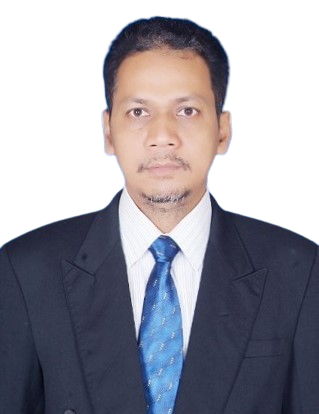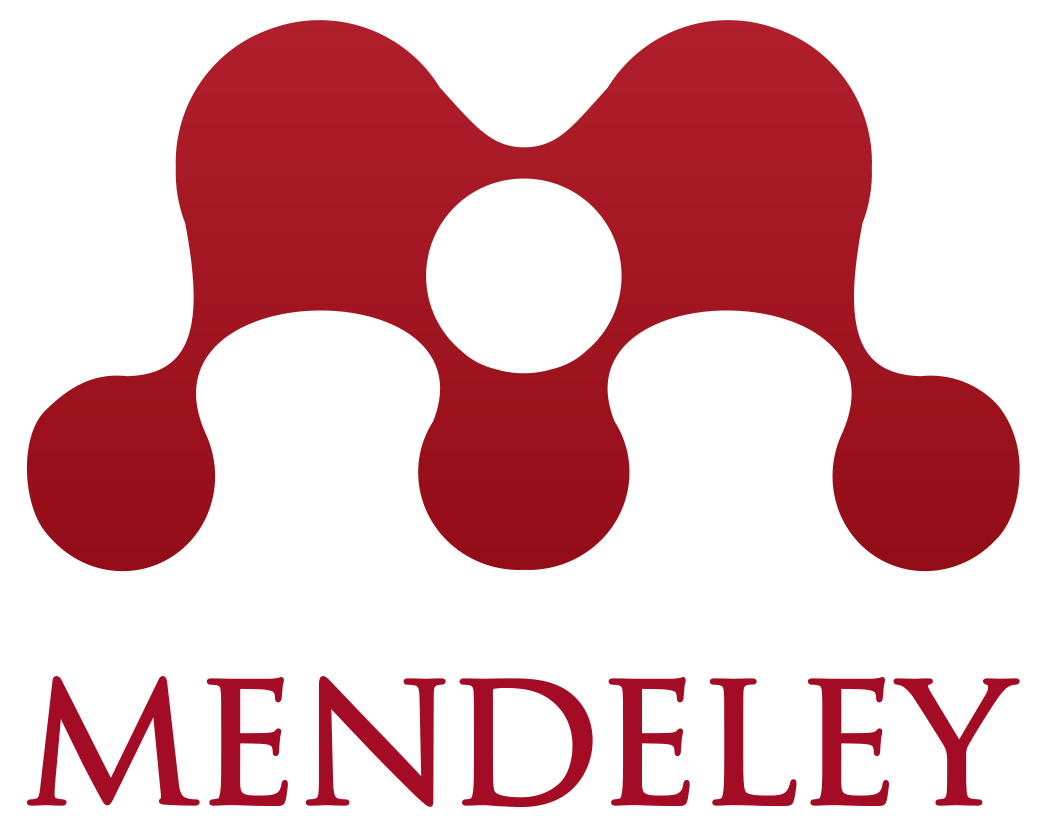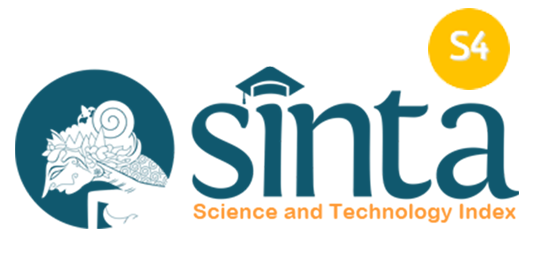Interdependence of Science and Social Context Through Lens of Banjar Culture Activities (Batimung): Convergent Model
Abstract
The integration of culture into science education serves as a bridge of knowledge, ensuring that students develop a comprehensive understanding of the scientific and social context and possess literacy as potential educators. The research objectives are to determine the following: 1) the topics that students are most interested in discussing in the context of "diversity," 2) the perspective of students on cultural integration in science learning, and 3) the interdependence of the context of science and the Batimung culture that is characteristic of South Kalimantan. The research methodology relies on a mixed-method with convergent model. Students in the 2020-2023 class of chemistry education comprised the sample. The data collection techniques comprise interviews, questionnaires, and literature reviews. According to the results, the scientific and social contexts are interconnected. The quantitative technique employed is a questionnaire that encompasses diversity aspects comprising a variety of topics. The results indicate that 1) the most desired subject matter for discussion is "the impact of the environment on an individual," with a 59% response rate; 2) cultural integration in science education is a critical endeavour; and 3) the Batimung culture demonstrates that the context of science and social (culture) are not only related but also mutually influential. The conclusion is that the context of science and social, particularly cultural aspects can be the most recent presentation in the teaching and profound interpretation of science through a cultural lens.
Keywords
Full Text:
PDFReferences
Afifah, A. F. (2022). Nilai sosial dalam kearifan local dengan tradisi Batimung pengantin. Pusat Publikasi Pemberlajaran, 1(1), 1–8.
Almubarak, & Saadi, P. (2023). INTEREST focused-learning sebuah desain pembelajaran abad ke-21 berbasis minat untuk melatih keterampilan sosial dan interaksi lintas budaya calon pengajar kimia. CV Banyubening.
Anggraeni, N. I., Hidayat, I. W., Rachman, S. D., & Ersanda. (2018). Bioactivity of essential oil from lemongrass (Cymbopogon citratus Stapf) as antioxidant agent. AIP Conference Proceedings, 1927. https://doi.org/10.1063/1.5021200
Balakrishnan, B., Paramasivam, S., & Arulkumar, A. (2014). Evaluation of the lemongrass plant (Cymbopogon citratus) extracted in different solvents for antioxidant and antibacterial activity against human pathogens. Asian Pacific Journal of Tropical Disease, 4(S1). https://doi.org/10.1016/S2222-1808(14)60428-X
Barke, H.-D., Harsch, G., & Schmid, S. (2012). Essentials of chemical education. In Angewandte Chemie International Edition, 6(11), 951–952. Springer.
Barke, H.-D., Hazari, A., & Yitbarek, S. (2009). Misconceptions in chemistry (addresing perceptions in chemical education). Sense Publisher. https://doi.org/10.1007/978-3-540-70989-3_2
Basicmedicakey. (2024). How essential oils enter the body. Fastest Basicmedical Insight Engine. https://basicmedicalkey.com/how-essential-oils-enter-the-body/#s0070
Bruce, M. R. M., Bruce, A. E., & Walter, J. (2022). Creating representation in support of chemical reasoning to connect macroscopic and submicroscopic domains of knowledge. Journal of Chemical Education, 99(4), 1734–1746.
https://doi.org/10.1021/acs.jchemed.1c00292
Creswell, J. W., & Clarck, V. L. P. (2007). Designing and conducting mixed methods research. SAGE Oublications.
Dittrich, L., Aagaard, T., & Hjukse, H. (2022). The perceived affordances of simulation-based learning: online student teachers’ perspectives. International Journal of Educational Technology in Higher Education, 19(1). https://doi.org/10.1186/s41239-022-00366-2
Fuentes-Vilugrón, G., Mansilla, E. A., Carrasco, I. B., Hernández, R. L., & Mella, E. R. (2023). Analysis of school educational spaces: A challenge for spatial relevance in contexts of sociocultural diversity. International Journal of Multicultural Education, 25(1), 53–80. https://doi.org/10.18251/ijme.v25i1.3363
Gagne, R. M. (1970). The conditions of learning (2nd ed.). Holt, Reinehart & Winston Inc.
García, A. J., Froment, F. A., & Bohórquez, M. R. (2023). University teacher credibility as a strategy to motivate students. Journal of New Approaches in Educational Research, 12(2), 292–306. https://doi.org/10.7821/naer.2023.7.1469
Giancoli, D. C. (2015). Physics (Principles with applications) (Global Edi). Pearson Education, Inc.
Harianingsih, H. H. (2018). Optimasi proses sintesis sitronelal dari sereh wangi (cymbopogon winterianus) dengan bantuan gelombang mikro menggunakan pelarut metanol dan n-heksan. Eksergi, 15(1), 1. https://doi.org/10.31315/e.v15i1.2227
Kemdikbud. (2023). MERDEKA BELAJAR eps 26: Transformasi standar nasional dan akreditasi pendidikan tinggi. Kemdikbud.Go.Id. https://www.youtube.com/watch?v=vNTmG4OIQZ4&t=1730s
Ken, J. (2022). Lemon Vs Lemongrass. Daily Detox Hacks. https://dailydetoxhacks.com/lemon-vs-lemongrass/
Liang, J., Zhang, Y., Chi, P., Liu, H., Jing, Z., Cao, H., Du, Y., Zhao, Y.,
Qin, X., Zhang, W., & Kong, D. (2023). Essential oils: Chemical constituents, potential neuropharmacological effects and aromatherapy - A review. Pharmacological Research - Modern Chinese Medicine, 6. https://doi.org/https://doi.org/10.1016/j.prmcm.2022.100210
Mezirow, J. (1991). Tranformative dimensions of adult learning. Jossey-Bass.
Mezirow, J. (1997). Transformative learning: Theory to practice. New Directions for Adult and Continuing Education, 1997(74), 5–12. https://doi.org/10.1002/ace.7401
Mezirow, J., Cottafava, D., Cavaglià, G., Corazza, L., Raikou, N., Chu, S. Y., Garcia, S., Schnitzler, T., Pappamihiel, N. E., Moreno, M., Mensah, F. M., Vatalaro, A., Szente, J., Levin, J., Buechner, B., Dirkx, J., Konvisser, Z. D., Myers, D., Peleg-Baker, T., … Wikan, G. (2019). Culturally responsive teaching efficacy beliefs of in-service special education teachers. Journal of Hispanic Higher Education, 10(2), 993–1013. https://doi.org/10.1108/IJSHE-05-2019-0168
Nambiar, V. S., & Matela, H. (2016). Potential functions of lemon grass ( cymbopogon citratus ) in health and disease. International Journal of Pharmaceutical & Biological Archives, 3(5), 1035–1043.
NGSS. (2013). Next generation science standards: For states, by states. National Academies Press.
Noortyani, R. (2024). Budaya Batimung.
Noortyani, R., Mu, F., & Amelia, R. (2023). Symbolic Communications in the Traditional Wedding Rituals of the Banjar Ethnic Community , Indonesia. 10(10), 154–178.
NSES. (1996). National Committee on Science Education Standards and Assessment, National Research Council. National Academies Press.
Pan, D., Machado, L., Bica, C. G., Machado, A. K., Steffani, J. A., & Cadoná, F. C. (2022). In vitro evaluation of antioxidant and anticancer activity of lemongrass (cymbopogon citratus (D.C.) Stapf). Nutrition and Cancer, 74(4), 1474–1488.
https://doi.org/10.1080/01635581.2021.1952456
Petrucci, R. H., Harwood, W. S., Herring, G. F., & Madura, J. D. (2011). Kimia dasar (prinsip-prinsip dan aplikasi modern) (A. Safitri (ed.)). Erlangga.
Popova, M., & Jones, T. (2021). Chemistry instructors’ intentions toward developing, teaching, and assessing student representational competence skills. Chemistry Education Research and Practice, 22(3), 733–748. https://doi.org/10.1039/d0rp00329h
Rahman, A., Suharyat, Y., Ilwandri, I., Santosa, T. A., Sofianora, A., Gunawan, R. G., & Putra, R. (2023). Meta-analisis : Pengaruh Pendekatan stem berbasis etnosains terhadap kemampuan pemecahan masalah dan berpikir kreatif siswa. Innovative: Journal Of Social Science Research, 3(2), 2111–2125.
https://doi.org/10.31004/innovative.v3i2.545
Rahmawati, Y., Jakarta, U. N., & Sastrapraja, A. R. (2017). Empowering students ’ chemistry learning : the integration of ethnochemistry in culturally responsive teaching empowering students ’ chemistry learning : the integration of ethnochemistry. Chemistry: Bulgarian Journal of Science Education, 26(813–830).
Rahmawati, Y., Ridwan, A., Faustine, S., & Mawarni, P. C. (2020). Pengembangan soft skills siswa melalui penerapan culturally responsive transformative teaching (crtt) dalam pembelajaran kimia. Jurnal Penelitian Pendidikan IPA, 6(1). https://doi.org/10.29303/jppipa.v6i1.317
Rahmawati, Y., Ridwan, A., Rahman, A., & Kurniadewi, F. (2019). Chemistry students’ identity empowerment through etnochemistry in culturally responsive transformative teaching (CRTT). Journal of Physics: Conference Series, 1156(1). https://doi.org/10.1088/1742-6596/1156/1/012032
Rodriguez, J. M. G., Stricker, A. R., & Becker, N. M. (2020). Exploring the productive use of metonymy: Applying coordination class theory to investigate student conceptions of rate in relation to reaction coordinate diagrams. Journal of Chemical Education, 97(8), 2065–2077. https://doi.org/10.1021/acs.jchemed.0c00496
Roth, W.-M. (2016). Becoming & Belonging. In L. Avraamidou (Ed.), Studying science teacher identity: Theoritical, methodological and empirical exploration (p. 295). Sense Publisher.
Saefuddin, S., & Maryadi, S. (2018). Dayak meratus di kalimantan selatan batimung healing tradition of the banjarese and dayak meratus community in south kalimantan. Naditira Widya, 12(2), 147–158.
Sari, J. A., Wusnah, W., & Azhari, A. (2021). Pengaruh suhu dan waktu terhadap proses penyulingan minyak sereh wangi (Cimbopogon Nardus L.). Chemical Engineering Journal Storage (CEJS), 1(1), 22. https://doi.org/10.29103/cejs.v1i1.1493
Schwedler, S., & Kaldewey, M. (2020). Linking the submicroscopic and symbolic level in physical chemistry: How voluntary simulation-based learning activities foster first-year university students’ conceptual understanding. Chemistry Education Research and Practice, 21(4), 1132–1147. https://doi.org/10.1039/c9rp00211a
Setyaningsih, E., Agustina, P., Anif, S., Ahmad, C. N. C., Sofyan, I., Saputra, A., Salleh, W. N. W. M., Shodiq, D. E., Rahayu, S., & Hidayat, M. L. (2022). PBL-STEM modul feasibility test for preservice biology teacher. Indonesian Journal on Learning and Advanced Education (IJOLAE), 4(2), 118–127. https://doi.org/10.23917/ijolae.v4i2.15980
Suja, I. W., Redhana, I. W., & Sudria, I. B. N. (2020). Mental model of prospective teachers on structure and properties correlation of organic compounds. Journal of Physics: Conference Series, 1503(1). https://doi.org/10.1088/1742-6596/1503/1/012034
Sukardi, Setyawan, H. Y., Pulungan, M. H., & Ariy, I. T. (2021). Ekstraksi minyak atsiri rimpang lengkuas merah (Alpinia purpurata, K.Schum.) metode destilasi uap dan air. Teknologi Pangan : Media Informasi Dan Komunikasi Ilmiah Teknologi Pertanian, 13(1), 19–28. https://doi.org/10.35891/tp.v13i1.2741
Susanto, D., Maulida, S., Karimah, R., & Fatmawati, N. (2024). Kearifan lokal kabupaten banjar. Jurnal Manajemen Pendidikan, 4(1), 7–23. https://doi.org/10.31602/jmpd.v3i2.14079
Szczepankiewicz, A. (2021). Therapeutic effect and mechanisms of essential oils in mood disorders: interaction between the nervous and respiratory systems. International Journal of MOlecular Sciences, 22(9), 4844.
https://doi.org/https://doi.org/10.3390%2Fijms22094844
Taylor, S., & Sobel, D. (2011a). Culturally responsive pedagogy: teaching like our students’ lives matter. Emerald Group Publishing LImited.
Taylor, S., & Sobel, D. (2011b). Culturally responsive pedagogy: teaching like our students’ lives matter. Emerald Group Publishing Limited.
Trans7. (2018). Bantimung, perawatan kecantikan khas suku banjar. https://www.youtube.com/watch?v=_ZhlEJjBmMU
Trilling, B., & Fadel, C. (2009a). 21st century skill: learning for life in our times (First (ed.)). Jossey-Bass.
Trilling, B., & Fadel, C. (2009b). 21st century skills: learning for life in
our times. Jossey-Bass.
van Berkel, B., Pilot, A., & Bulte, A. M. W. (2009). Micro–macro thinking in chemical education: why and how to escape. In J. Gilbert K & D. Treagust (Eds.), Multiple Representations in Chemical Education, Models and Modeling in Science Education (pp. 31–54). Springer. https://doi.org/10.1007/978-1-4020-8872-8_3
Wikipedia. (2024a). Kalimantan Selatan. Wikipedia. https://id.wikipedia.org/wiki/Kalimantan_Selatan
Wikipedia. (2024b). Sereh Wangi. Wikipedia. https://id.wikipedia.org/wiki/Serai_wangi
Winarti, A., Almubarak, A., Saadi, P., Ijirana, I., Aminah, S., & Ratman, R. (2022). Culturally responsive chemistry teaching (crct) of college students as a novice teacher: does it matter? JTK (Jurnal Tadris Kimiya), 7(2), 175–189. https://doi.org/10.15575/jtk.v7i1.20676
Yager, R. (1996). Science/technology/society: As reform in science education. State University of New York Press.
Yamaguchi, Y., & Atsuta, K. (2013). Isolasi dan identifikasi minyak atsiri dari minyak cengkeh. Isolasi Dan Identifikasi Minyak Atsiri Dari Minyak Cengkeh, 84, 487–492. http://ir.obihiro.ac.jp/dspace/handle/10322/3933
DOI: https://doi.org/10.20527/jmscedu.v4i1.12387
Refbacks
- There are currently no refbacks.

This work is licensed under a Creative Commons Attribution 4.0 International License.

Journal Of Mathematics Science and Computer Education is licensed under a Creative Commons Attribution-ShareAlike 4.0 International License.









.jpg)
1.png)

